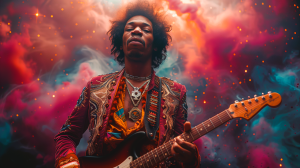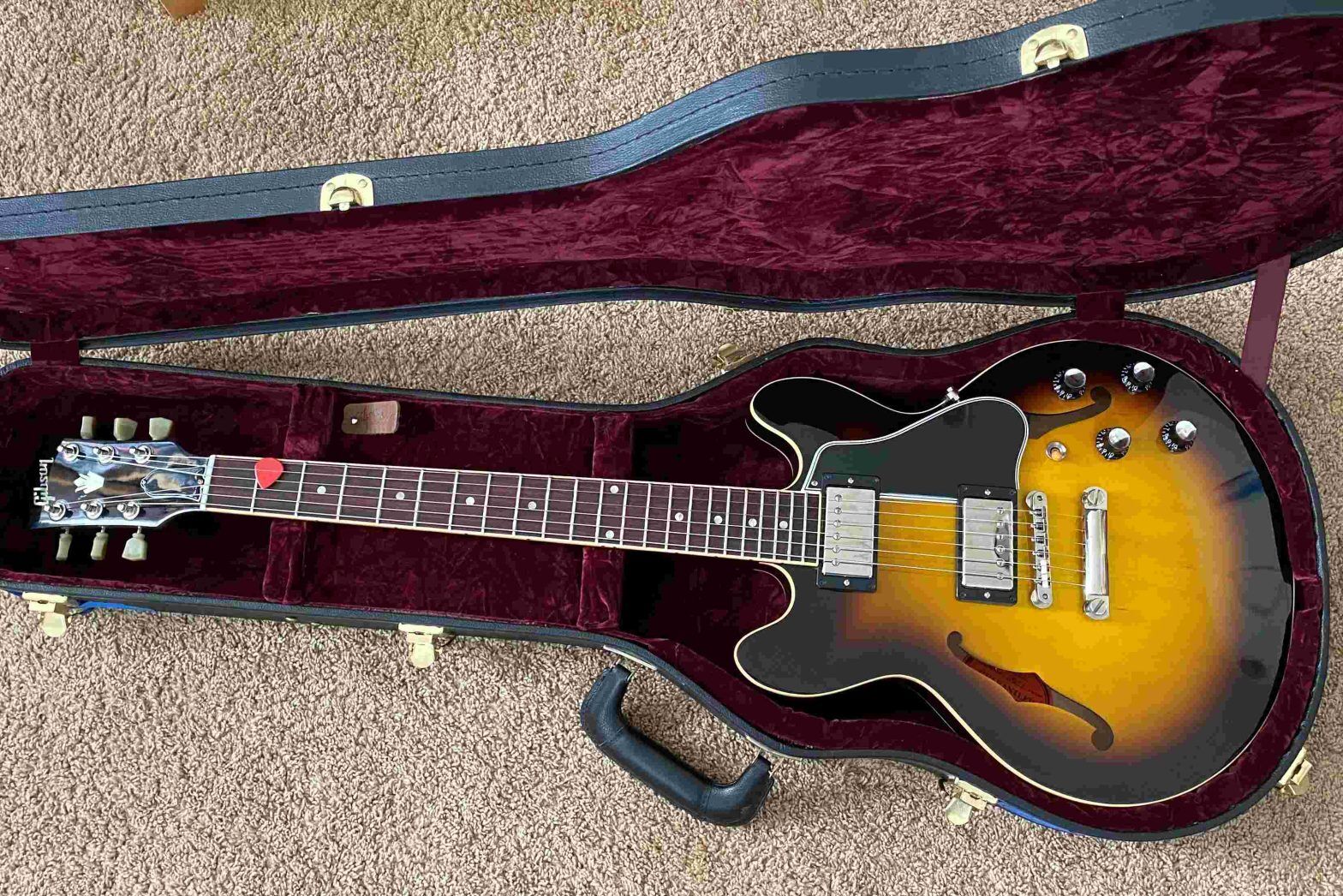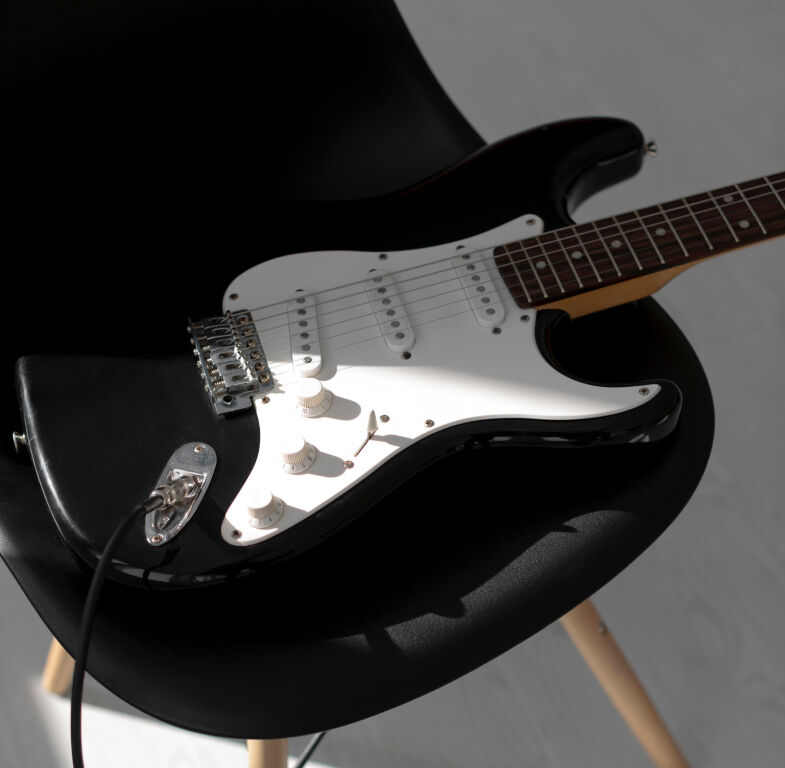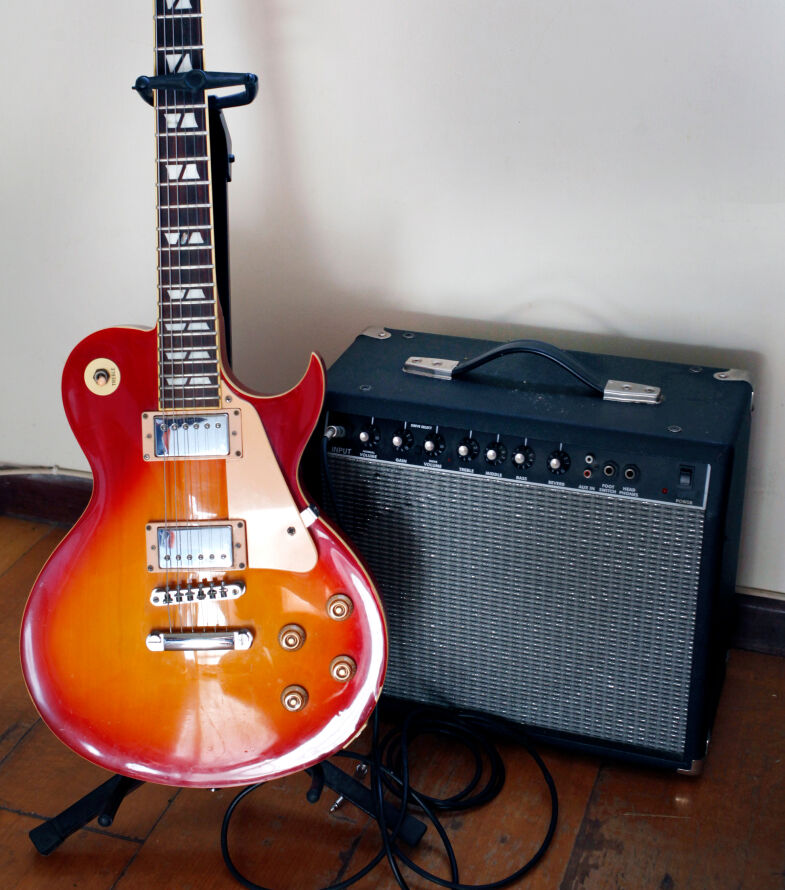
How the Electric Guitar Strummed Its Way to Stardom
Once upon a time, in the bustling era of the 1930s, a revolution was about to begin—a musical revolution, destined to change the face of music forever. This is the story of the electric guitar, a humble instrument that rose to become a rock star.

The Quiet Beginnings
Imagine a noisy dance hall in the early 1930s, with big bands playing and people swinging to lively jazz. Amidst the trumpets and saxophones, there was the gentle strumming of a guitar, barely audible over the cacophony. The acoustic guitar, with its soft and melodious tones, struggled to make itself heard. This was a problem, and as history shows us, every great invention begins with a problem.
Enter our first hero, Les Paul, a musician and inventor with a knack for tinkering. Les was not just any musician; he was a visionary who saw the guitar not just as a musical instrument but as a potential powerhouse of sound. In his small apartment, Les experimented with attaching microphones to his acoustic guitar, but the results were less than stellar—too much feedback, not enough clarity. Undeterred, Les created “The Log,” a piece of wood with strings and a pickup, which amplified the sound through electricity. It was crude, but it worked.
The Craftsmen Enter the Stage
Meanwhile, on the other side of the country, another pioneer was at work. Leo Fender, an unassuming radio repairman in California, also saw the potential of the electric guitar. Leo was more of a craftsman than a musician, which perhaps explains why he approached the guitar from a different angle. He focused on making the instrument easy to mass-produce and robust enough to withstand the rigors of touring and performing. In 1950, Fender released the Telecaster, the first mass-produced electric guitar, which featured a sleek, simple body and a revolutionary solid design that made it louder and less prone to feedback.
The Rise to Fame
As the 1950s dawned, a cultural shift was underway. Teenagers, a new demographic, were searching for something that spoke directly to them, away from the prying ears of their parents. Rock ‘n’ roll entered the scene like a storm, with the electric guitar leading the charge. Artists like Chuck Berry picked up Fender’s creation and made magic with it. Berry’s “Johnny B. Goode” could not have rocked the way it did without his trusty electric guitar, whose clear, sharp twangs cut through the air like never before.
The electric guitar became synonymous with youth and rebellion. It was no longer just an instrument; it was a statement.
Legends are Made
The 1960s and ’70s were the golden era for the electric guitar. This period brought us guitar gods like Jimi Hendrix and Eric Clapton. Hendrix, in particular, transformed the way the electric guitar was played. His performance at Woodstock—where he coaxed sounds of wailing bombs and screaming rockets from his Fender Stratocaster during a psychedelic rendition of the “Star-Spangled Banner”—was more than music; it was history being made.
Hendrix’s guitar wasn’t just an instrument; it was an extension of his soul. With each performance, he pushed the electric guitar to its limits, experimenting with feedback, distortion, and sustain. His influence was so profound that the electric guitar transcended its role as a musical tool and became a vehicle for social change and expression.
Adapting to the Digital Age
As the 20th century waned, the electric guitar faced new challenges. The rise of electronic music and digital synthesis in the 1980s and ’90s seemed to threaten the dominance of the electric guitar. Synthesizers and drum machines filled the airwaves with a different kind of sound. But the electric guitar was not to be overshadowed.
Innovations in guitar technology, like MIDI (Musical Instrument Digital Interface) guitars, allowed the electric guitar to interface with computer technology, creating new sounds and possibilities. The guitar adapted, bending to the winds of change but never breaking.
The Resurgence
Then came the 2000s, and with it, a surprising twist in our tale. Video games like Guitar Hero and films about rock bands introduced the electric guitar to a new generation. Kids and teenagers who had never touched a real guitar were now wielding plastic replicas, playing along to the classics. The electric guitar had become a cultural icon, immortalized in pixels and plastic, yet more alive than ever.
The Legacy Continues
Today, the electric guitar remains a symbol of creativity and rebellion. It continues to evolve, integrating with technology and influencing new genres. From garages to grand concert halls, the electric guitar commands a presence that is both timeless and contemporary.
What began as a solution to a simple problem has become a defining feature of musical expression. The electric guitar










